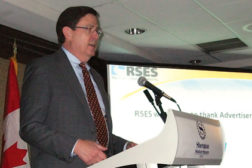- NEWS
- MEDIA
- REFRIGERATION
- BUSINESS 101
- RESIDENTIAL
- COMMERCIAL
- DIRECTORY
- MORE
- INFOCENTER
- MEDIA GROUP
- MAGAZINE
Robert Wilkins
Robert Wilkins is vice president of public affairs for Danfoss. For more information, visit www.danfoss.com.
ARTICLES
Countdown Begins for HFC Phase Down
Move Away from Hydrofluorocarbon Refrigerants Guided Globally, Domestically
Read More
A Whole-Building Systems Approach to Energy Efficiency
Trends and Innovations Offer New Opportunities for Progress
Read More
Copyright ©2025. All Rights Reserved BNP Media.
Design, CMS, Hosting & Web Development :: ePublishing






